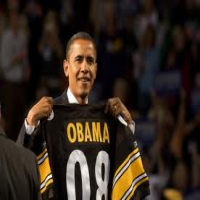For more than two years, the police in San Leand
Post# of 5428

For more than two years, the police in San Leandro, Calif., photographed Mike Katz-Lacabe's Toyota Tercel almost weekly. They have shots of it cruising along Estudillo Avenue near the library, parked at his friend's house and near a coffee shop he likes. In one case, they snapped a photo of him and his two daughters getting out of a car in his driveway.
Mr. Katz-Lacabe isn't charged with, or suspected of, any crime. Local police are tracking his vehicle automatically, using cameras mounted on a patrol car that record every nearby vehicle—license plate, time and location.
"Why are they keeping all this data?" says Mr. Katz-Lacabe, who obtained the photos of his car through a public-records request. "I've done nothing wrong."
Until recently it was far too expensive for police to track the locations of innocent people such as Mr. Katz-Lacabe. But as surveillance technologies decline in cost and grow in sophistication, police are rapidly adopting them. Private companies are joining, too. At least two start-up companies, both founded by "repo men"—specialists in repossessing cars or property from deadbeats—are currently deploying camera-equipped cars nationwide to photograph people's license plates, hoping to profit from the data they collect.
The rise of license-plate tracking is a case study in how storing and studying people's everyday activities, even the seemingly mundane, has become the default rather than the exception. Cellphone-location data, online searches, credit-card purchases, social-network comments and more are gathered, mixed-and-matched, and stored in vast databases.
Is Your Car Being Tracked?
- Check if Riverside County Has Scanned Your Plates
- How the Wall Street Journal Obtained the License Plate Data
Data about a typical American is collected in more than 20 different ways during everyday activities, according to a Wall Street Journal analysis. Fifteen years ago, more than half of these types of surveillance tools were unavailable or not in widespread use, says Col. Lisa Shay, a professor of electrical engineering at the U.S. Military Academy at West Point who studies tracking.
"What would the 1950s Soviet Union have done with the technology we have now?" says Col. Shay. "We don't have a police state in this country, but we have the technology."
Law-enforcement agents say they are using this information only to catch bad guys.
During the past five years, the U.S. Department of Homeland Security has distributed more than $50 million in federal grants to law-enforcement agencies—ranging from sprawling Los Angeles to little Crisp County, Ga., pop. 23,000—for automated license-plate recognition systems. A 2010 study estimates that more than a third of large U.S. police agencies use automated plate-reading systems.
The information captured is considerable. Through a public-records act request, The Journal obtained two years' worth of plate information from the Riverside County Sheriff's Department in California. From Sept. 10, 2010, to Aug. 27, 2012, the sheriff's cameras captured about 6 million license-plate scans.
The sheriff's 49 camera-equipped vehicles scanned about 2 million unique plates. The average plate in the database was scanned three times over the two-year period. Less than 1% of plates were tracked extensively—hundreds of times, and occasionally thousands.
 (0)
(0) (0)
(0)![[image]](http://si.wsj.net/public/resources/images/OB-UT797_Rivers_D_20120928143102.jpg)